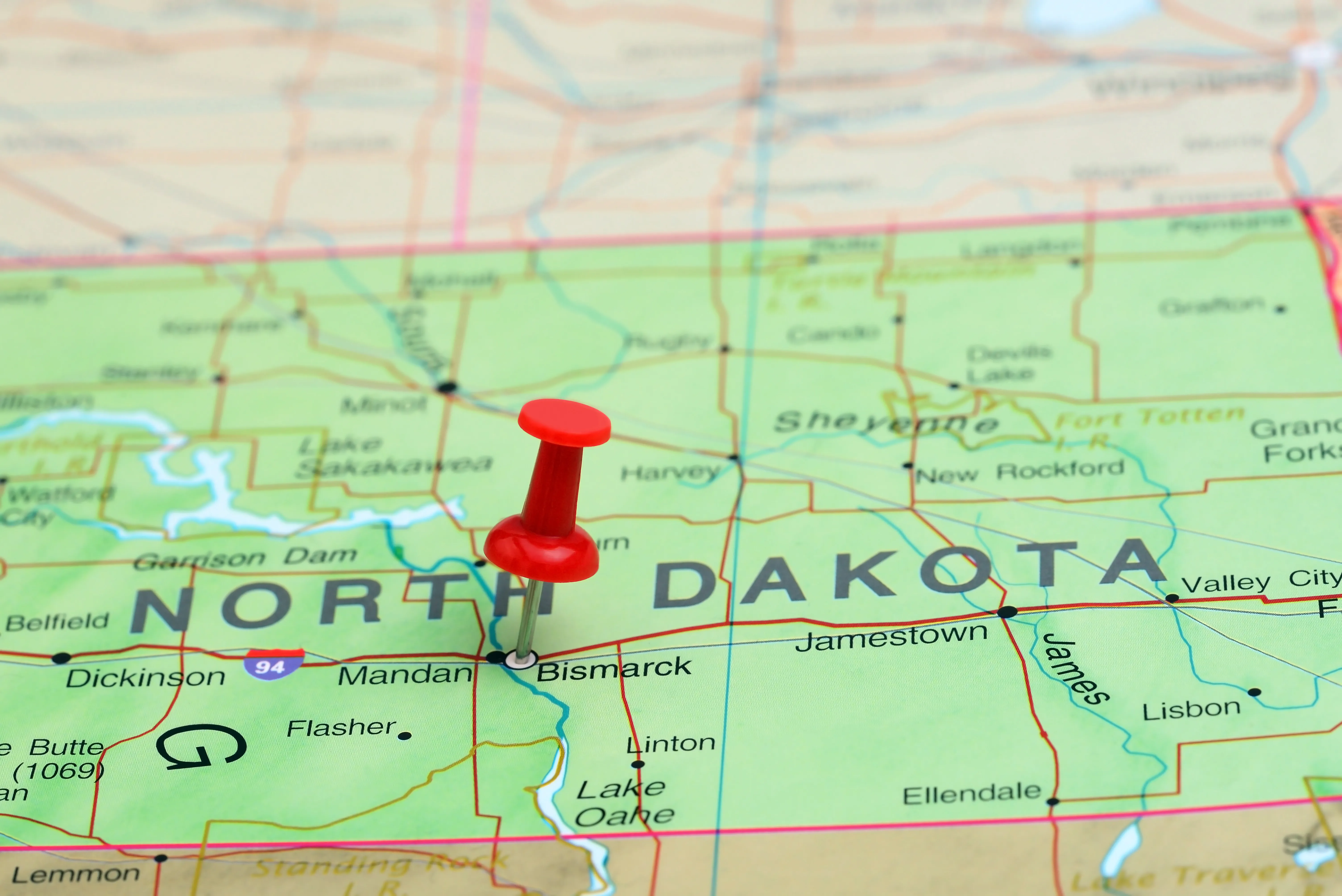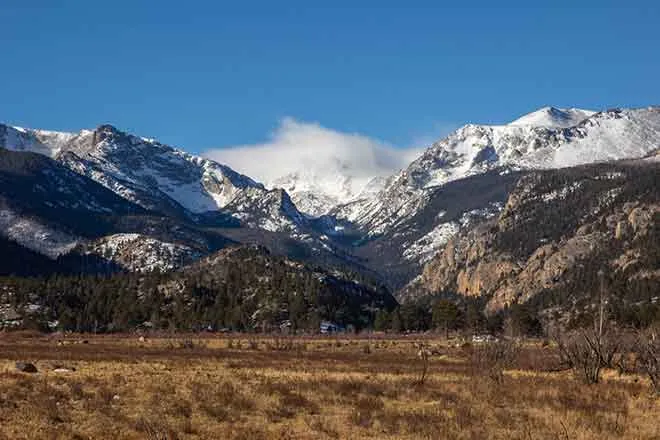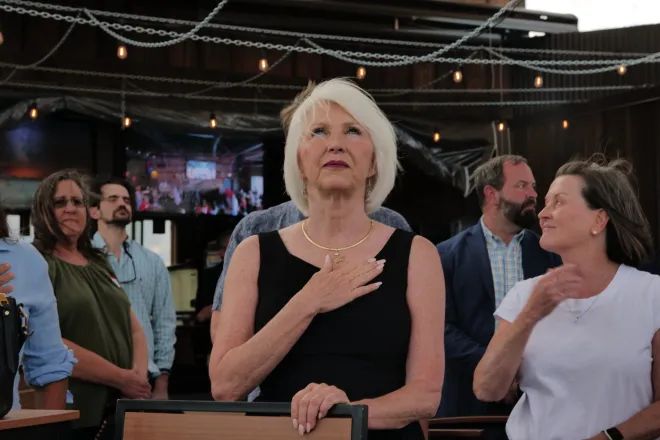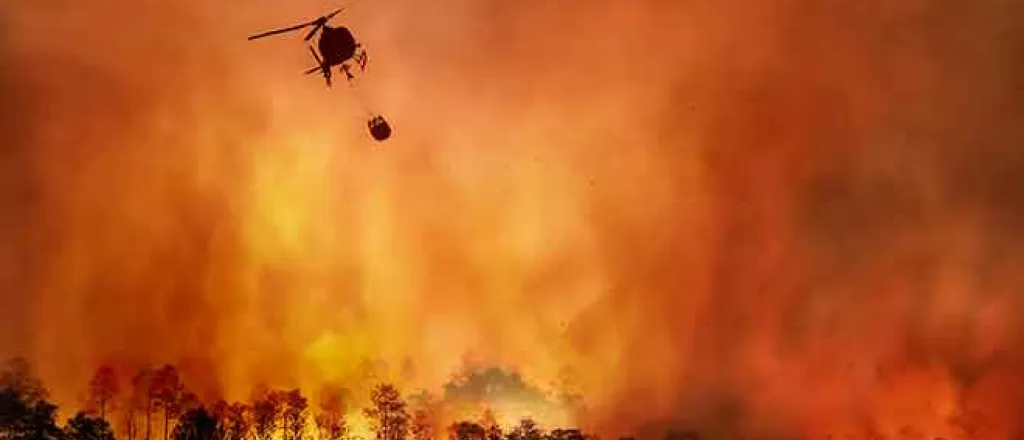
Federal support for wildfire prevention wanes as risk in Colorado grows
State and federal collaboration is essential to ensure robust wildfire resilience, but uncertainty over Trump administration priorities undercuts preparedness in Colorado, experts say
Wildfire experts say the best way for Colorado to reduce the destructive power of wildfires is to prepare a proactive response supported by the federal government.
But it’s uncertain whether federal resources will continue to support fire mitigation and resilience projects, and organizations that work on those projects are no longer sure whom to talk to at federal agencies they’ve previously worked with. In a fire-prone state that’s entering the warm months, this has reduced momentum on fire prevention efforts some experts say are essential to protecting Colorado communities.
The Trump administration has upended federal agencies such as the U.S. Forest Service and the Bureau of Land Management with staff reductions and reorganizations. And the federal hiring freeze Trump implemented on inauguration day has meant many open positions are left unfilled.
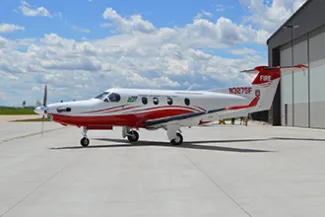
Rebecca Samulski, executive director of Fire Adapted Colorado, a nonprofit that supports wildfire resilience professionals around the state, said the energy around proactive mitigation has “kind of stalled right now,” as organizations determine how to stay afloat without the guarantee of federal support. With all of the moving pieces, prevention experts have again become reactive while trying to “stay sane.”
“I just think it’s really important that the federal government continue to have a role in the proactive wildfire resilience work,” Samulski said. “We know that it’s a lot more cost effective to do the work up front with communities than to wait and to respond to disasters or recover from them.”
Matt McCombs, Colorado State Forest Service director, said that in what is expected to be an average wildfire season — which “is a really bad year in Colorado” — work to improve resiliency and protect communities and watersheds is essential to safeguarding Colorado’s billion dollar recreation and outdoor economy.
The Colorado Division of Fire Prevention and Control’s 2025 Wildfire Preparedness Plan warned that Colorado may have “slightly above-average wildland fire activity” this year, as well as the potential for delayed response times and fewer firefighting resources because of concerns around federal funding. That can jeopardize communities, natural resources and infrastructure in Colorado.
The wildfire season is longer and more intense in Colorado and the West due to the effects of climate change, as well as prolonged drought and a buildup of dry fuels. The three largest wildfires in state history all occurred in 2020, and the most state’s most destructive fire — the 2021 Marshall Fire — leveled entire subdivisions during winter in an urban area once thought relatively safe from wildfires.
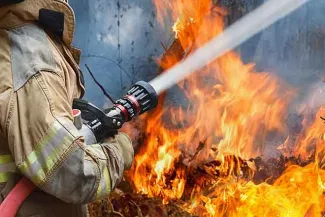
© iStock - toa55
Vail Fire Chief Mark Novak said there are three tenets to the nationally recognized “cohesive wildfire management strategy”: resilient landscapes, fire adaptive communities, and a safe and effective response. In Vail — where the town is 4.5 square miles surrounded by hundreds of thousands of acres of U.S. Forest Service land — collaboration with the federal government is essential to successfully reduce the threat forests can pose in the event of a fire.
“In a community like ours where we’re surrounded by the forests, there’s a lot we can do to protect our community by creating that fire-adapted community and by having a good response, but ultimately we have to have all three pieces of the cohesive strategy and we need to have resilient landscapes,” Novak said. “If that pipeline of the work that needs to be done slows down, it makes us more vulnerable, so that’s very concerning.”
Fire Adapted Colorado and the Colorado Forest Collaboratives Network wrote to Colorado’s members of Congress in April asking them to intervene because of how funding freezes and executive orders are “severely hampering” wildfire preparedness. That includes the Building Resilient Infrastructure and Communities grant program through the Federal Emergency Management Agency.
The state’s Fire Prevention and Control was in the process of applying for the resilient communities grant under FEMA to support education and training for local jurisdictions as it looks to roll out its newly developed wildfire resiliency code. Christopher Brunette, chief of the division’s fire and life safety section, said the division is looking for other ways to provide that training without federal funding.
At the end of April, Colorado’s entire Democratic delegation in Congress, as well as Republican U.S. Rep. Jeff Hurd of Grand Junction, wrote to U.S. Department of Agriculture Secretary Brooke Rollins and asked her to reinstate Forest Service staff who were trained to respond to wildfire incidents outside of their primary work duties.
“The Forest Service is now entering peak fire season in a compromised position, placing an even greater fire danger on communities across Colorado,” the lawmakers said in their letter.
U.S. House Assistant Minority Leader Joe Neguse of Lafayette and U.S. Sen. John Hickenlooper, both Democrats, also sponsored legislation that would reinstate all staff at the Forest Service and the National Park Service who were “wrongfully terminated” by the Trump administration.

© JJ Gouin - iStock-1642293566
Novak said he’s heard estimates that 25% of the Forest Service’s resource positions in Colorado, such as those who conduct environmental analysis on projects and verify field work is being done properly, are open and likely won’t be filled.
“People have left them or there’re seasonal positions that won’t be filled, so we’re very concerned about being able to actually implement projects, even projects that already have approval,” Novak said.
We know that it’s a lot more cost effective to do the work up front with communities than to wait and to respond to disasters or recover from them.
A statement from the U.S. Forest Service said that wildland firefighting positions are considered public safety positions, which are therefore exempt from the federal hiring freeze under an April order from Rollins. The forest service “remains operationally ready to support wildfire response efforts” with state and local partners, the statement said.
About 5,000 “non-fire” Forest Service staff have left their positions or are in the process of doing so across the country, the statement said, but it did not provide more information on those positions or what they did.
While many of the “primary fire” positions have been exempt from reduction in force efforts, Novak said many “secondary fire” positions, like biologists who could help as a resource adviser in the event of a fire, have left their roles.
“So if we look at fire suppression as a system, we know that system has less capability than it did just last year,” Novak said.
Vail Fire hires seasonal foresters to help with projects during the warmer months, and Novak said it just hired someone who left a full-time forest service position for a six-month seasonal position.
“I don’t want to speak to their motivations, but I think it’s pretty telling when people are leaving full-time positions to take seasonal positions,” Novak said.
A spokesperson for the U.S. Department of Interior, which oversees the BLM, cited a “joint fire memo” signed by Rollins and Interior Secretary Doug Burgum to ensure wildland firefighting in the U.S. is “highly coordinated and focused on fighting wildfires quickly and effectively.” That order allows an exemption from the federal hiring freeze for certain positions.
“The Department is working to hire key positions that will continue to protect public and tribal lands, infrastructure, and communities from the impacts of wildfires through hazardous fuels management, wildfire preparedness, and close collaboration with interagency partners,” the spokesperson said in a statement.
Dependent on federal funding
McCombs said Trump’s budget proposes a wholesale elimination of an arm of the U.S. Forest Service that provides support on non-federal lands and is a core component of the state forest service’s funding. He said Colorado State Forest Service is proud of how it uses the resources it receives from the federal government, which it and other state forestry services have done for decades.
In the 2024 fiscal year, running through the end of June 2024, the CSFS spent about $11.1 million from federal grants, which is just under 36% of the state forest service’s budget.

© zimmytws - iStock-511889079
Samulski said many wildfire prevention organizations do their work with the support of federal funding, with several becoming reliant on those federal funds to continue operating. Some groups have reduced their work or shut down entirely because of the fear that they will lose funding, or because there aren’t projects being funded right now, she said.
Many long-standing grant programs shifted to receive funding from the Inflation Reduction Act under the Biden administration, even though they were previously funded from other sources, and were frozen by the Trump administration, Samulski said. While some grant programs have been unfrozen, others haven’t, and the uncertainty has led some groups to search for other revenue sources.
“Many of the organizations are trying to figure out how to pivot and be less reliant on federal funding, and I’ve already had to pause … projects on the ground or cancel projects because they don’t know if they’ll get the reimbursement,” Samulski said.
Those projects include removal of hazardous fuels on the ground or vegetation surrounding state, federal or private lands near communities, homes or watersheds, Samulski said. She said organizations focused on wildfire prevention have been growing in recent years as they realized they need to be more proactive.
“No amount of firefighting is actually going to change the outcomes that are happening on the ground that much,” Samulski said. “We need to do more in advance of the fires, and so there’s kind of been this recognition and a shift in terms of trying to build up that capacity.”
Dissolving partnership agreements
On top of its primary responsibilities of overseeing state and private forestry projects in Colorado, the CSFS has agreements with the federal Forest Service and the BLM under the Good Neighbor Authority, a concept McCombs said started in Colorado. The Good Neighbor Authority allows federal agencies to establish agreements with state agencies to conduct forest management activities such as fuels reduction, forest health improvement and habitat improvement on federal lands.
The CSFS has about 25 active projects under the Good Neighbor Authority, with 15 full-time employees staffed through funding from the GNA. The state forest service has completed over 15,000 acres of forest treatment through the GNA on federal, state and private land.
“I don’t think there’s a national forest in the state where we are not under agreement to do some work to support and build capacity for the (U.S. Forest Service) so they can accelerate the critical forest health wildfire mitigation work that needs to be done,” McCombs said. “Our people know each other, they trust each other. Sometimes it’s not easy for federal and state entities to work well together. We do this really well in Colorado.”
As agencies potentially affected by financial cuts at the federal level wait to see the final outcomes, McCombs said CSFS leaders remain in consistent communication with their USFS counterparts to determine how state foresters can best help and continue working together.
“That’s a really positive thing that even amidst all of this rapid and in some instances, unwanted or unwelcome change, we’re still striving to try to stay in communication and keep moving things forward, because the wildfire is not going to wait,” McCombs said. “We’ve got to keep driving forward under whatever context we’re operating in.”
Coalitions and Collaboratives, a Colorado-based nonprofit that advocates for resilient ecosystems, also works under a cooperative agreement with the Forest Service to help with wildfire resilience and mitigation. Jonathan Bruno, CEO of COCO, said the group helps local programs working on resilience and mitigation efforts ensure they have long-term sustainability. The nonprofit also distributes grants funded by the Forest Service.
After the Trump administration took over, Bruno said all of his organization’s grant agreements with the Forest Service were put under review and frozen. He said about 90% of the funding his organization works with comes from the federal government.
“That delay thankfully was short-lived, thanks to the courts, but I’m scared because it feels as though maybe those court rulings may not hold up,” Bruno said. “How do you budget if you don’t know that you’re going to even have a dollar?”
The challenge is that the internal people that I've worked with for years and the people that I've trusted, they don't know either. There's a lot of uncertainty in the system, which makes everyone really nervous and uncomfortable.
Bruno said his organization is “being really cautious” about entering into any new agreements since he’s unsure they will get all the funding they have been promised. While COCO already selected recipients for their spring grant cycle this year, they haven’t executed any contracts yet.
Under the five-year agreements COCO historically enters with the Forest Service, Bruno said it makes adjustments every year depending on actual funding needs and developments in its projects. As he is planning adjustments to those agreements with his federal partners this year, both parties are unsure what to expect.
“The challenge is that the internal people that I’ve worked with for years and the people that I’ve trusted, they don’t know either,” Bruno said. “There’s a lot of uncertainty in the system, which makes everyone really nervous and uncomfortable.”
Bruno said the mitigation work of many people in the Forest Service is already thankless, and they do it simply because they care about protecting their communities. He’s had to pivot from working with those local, on-the-ground Forest Service staff to working with the higher-ups now making the decisions.
“It’s never what we wanted, because those that have the most to lose and gain are those people in a community, not the politicians,” Bruno said. “We need to make sure that those that are in these powerful, decision-making positions have the information they need to make well-defined, well-reasoned sort of judgments on who’s going to live and who’s going to die.”
Historically, Vail Fire has collaborated with the Forest Service to get federal approval for fuels reduction projects, and the two entities split the costs for the review process as well as the actual fuels management once projects are approved. Recently, it’s become unclear whether funding previously guaranteed to projects with Vail will come through.
“Pretty much every kind of landscape-level project we’ve done has been on Forest Service land,” Novak said.
The process can take years and can cost millions. One project Vail Fire is currently working on with the Forest Service took about three and a half years to plan and get approval, Novak said, and Vail paid about $300,000 throughout that process with the understanding that the Forest Service would pay for the actual treatment. They’ve received “some direct funding,” but not nearly all of the funding needed to fully implement the $3 to $5 million project, he said.
While apprehension around federal fire mitigation, prevention and suppression capabilities continues, local government firefighters will still be there to protect their communities, Novak said. For about 80% of all fires, the initial response comes solely or partially from local firefighters and responders — though prevention should be prioritized, he said.
McCombs said he views the success of the Forest Service and the BLM’s work in Colorado as Colorado’s success, and less funding and staff for those agencies is “an explicit translation to less work.”
“The alternative is uncharacteristic wildfires that have damaging, just wildly disruptive impacts and long-term impacts to things that are really important to Coloradans,” McCombs said. “We’re communicating through our partners and engaging with those that have a vested interest to make sure that folks are aware of some of the trade-offs that exist when funding is reduced and when staffing in particular is reduced.”








